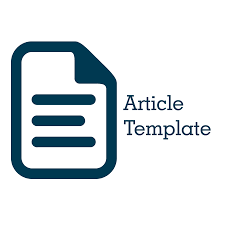Aplikasi M. Learning Pendidikan Seksualitas untuk Orangtua Anak Autis di Komunitas Sekolah Cemara Surabaya
Abstract
Keywords
Full Text:
PDFReferences
APA. (2013). Diagnostic and Statistical Manual of Mental Disorder (DSM) 5th edition. Washington: American Psychiatric Publishing.
Asra, Yulita K. (2013). Efektivitas Psikoedukasi Pada Orangtua Dalam Meningkatkan Pengetahuan Seksualitas Remaja Retardasi Mental Ringan. Jurnal Psikologi Vol. 9 No. 1
Attwood, T. (2007). The Complete Guide to Asperger Syndrome. London: Jessica Kingsley Publisher.
Barboy dkk. (2017). Girl Talk: A Smartphone Application to Teach Sexual Health Education to Adolescent Girls. Journal Pediatrics Adolescent 30 (1) pp 23-28.
Beddows, N dan Brooks, R. (2016). Inappropriate Sexual Behavior in Adolescents with Autism Spectrum Disorder: What Education is Recommended and Why. Early Intervention in Psychiatry, 10, pp. 282-289.
Bexley, DiiAnn L. Dan Zenderll, Anna. Sexuality Education for Children and Adolescents with Developmental Disabilities: An Intructional Manual for Parents and Caregivers of and Individuals with Developmental Disabilities (Sexuality Across The Lifespan). Florida Developmental Disabilities Council.
Campbell, Lindsay. (2008). An Assesment of Autism Knowledge in The Medical Field. Thesis Faculty of Social Science, Brock University.
Chaste P, Leboyer M. (2012). Autism risk factors: genes, environment, and gene-environment interactions. Dialogues in Clinical Neuroscience, 14(3), pp. 281-292.
Denning, C. B. dan Moody, A. K.(2013). Supporting Student with Autism Spectrum Disorder in Inclusive Setting: Rethinking Instruction and Design.
Darsono dkk. (2000). Belajar dan Pembelajaran. Semarang: IKIP Semarang.
European Expert Group on Sexuality Eucation. (2016). Sexuality Education – What Is It. Journal Sex Education, 16:4, 427-431.
Freitag, C.M. dkk. (2010). Genetic of Autistic Disorder: Review and Clinical Implications. Journal of European Child and Adolescent Psychiatry, 19, 169-178.
Hartman, Davida. (2014). Sexuality and Relationship Education for Children and Adolcents with Autism Spectrum Disorder: A Professional’s guide to Understanding, Preventing Issues, Supporting Sexuality and Responding to Inappropriate Behaviours. London: Jessica kingsley Publisher.
Jackson, Elizabeth A. (2014). Puberty and Sex Education Resources for Children with Developmental Disabilities. Master’s Project to The Faculty of Humboldt State University.
Kalyva, E. (2010). Teacher’s Perspective of the Sexuality of Children with Autism Spectrum Disorder. Research in Autism Spectrum Disorder, 4, p. 433-437.
Kumar, Santosh. (2013). M-Learning: A New Learning Paradigm. International Journal on New Trends in Education and Their Implications, Vol. 4, Issue 2, India.
Kumar, Santosh.. (2013). E and M-Learning; A Comparative Study. International Journal on New Trends in Education and Their Implications, Vol. 4, Issue 3, India.
Lynne, M. (2011). Interview for Autism Spectrum Disorder Relationships and Sexuality Research Bulletin Issue No. 5.
Menteri Kesehatan Republik Indonesia. (2014). Peraturan Menteri Kesehatan (PMK) Republik Indonesia Nomor 66: Pemantauan, Pertumbuhan, Perkembangan dan Gangguan Tumbuh Kembang Anak.
Mesheriakova, V. dan Tebb, K. (2017). Effect of an ipad-Based Intervention to Improve Sexual Health Knowledge and Intentions for Contraceptive Use Among Adolescent Females at School-Based Health Centers. Journal Clinical Pediatrics 56 (13) pp 1227-1234.
Nair, R. Sudha. (2015). Challanges, Strategies and Success Gained By A Teacher in Teaching Autism Student in A Private Centre. International Journal of Social and Humanities Research, Vol. 3, Issue 2, pp. 419-425.
Sharples, M. (2005). Learninng as Conversation: Transforming Education in The Mobile Age. Proceedings Understanding, Learning in the mobile Age, pp 147-152.
Sindangsari, Rendasih. (2013). Penyusunan Modul Pendidikan Seksual untuk Ornagtua yang Memiliki Anak Down Syndrom. Tesis Magister Profesi Psikologi Universitas Negeri Surabaya.
Sugiyono. (2006). Metode Penelitian Pendekatan Kuantitatif, Kualitatif dan R&D. Bandung: Alfabeta.
Sukinah, Alimudin, Z., dan Rochyadi, E. (2010). Penanganan Penyaluran Dorongan Seksual Remaja Autis. Jurnal Penelitian Ilmu Pendidikan, Volume 03, Nomor 2.
Tisor, C. (2009). Establishing a sexual identity: Case studies of Learners with Autism and Learninng Difficulties. Autism, 13 (6), p 551-566.
Travers, Jason dan Tincani, M.. (2010). Sexuality Education for Individual with Autism Spectrum Disorder: Critical Issues and Decision making Guidelines. Journal Education ad Training in Autism and Developmental Disabilities, 45 (2), 284-293.
Traxler, John. (2009). Learning in Mobile Age. International Journal of Mobile and Blended Learning, Vol 1 (1), 1-12.
Trembath dkk. (2015). Accurate or assumed: Visual Learning in Children with ASD. Journal of Autism and Developmental Disorders. Vol. 45 Issue 10 pp 3276-3287
UNESCO. (2012). Turning on Mobile Learning In Asia: Illustrative Initiatives and Policy Implication. France: UNESCO
Westcott, H. L. dan Jones, D.P.H. (1999). Annotation: The Abuse of Disabled Children. Journal Child Psyhology and Psychiatry, Vol. 40, No. 40, pp 497-506.
WHO. (2006). Defining Sexual Health: A Report of A Technical Consultation on Sexual Health 28—31 Januari 2002, Geneva. Sexual Helath Document Series.
DOI: https://doi.org/10.32528/ins.v17i2.2118
Refbacks
- There are currently no refbacks.
Copyright (c) 2021 Insight : Jurnal Pemikiran dan Penelitian Psikologi

This work is licensed under a Creative Commons Attribution 4.0 International License.
View My Stats


.jpg)







